14 Sedeveria Varieties: Identification and Care Guide
Sedeveria succulents are a captivating fusion of two distinct plant genera, Sedum and Echeveria, within the Crassulaceae family. At first glance, these genera might seem like an unlikely pair, but their hybrid offspring are nothing short of stunning. With thick, dramatic foliage adorned in vivid colors and elongated stems, it’s impossible not to admire the fantastic beauty of these plants. In some nurseries, they are referred to as x Sedeveria, with the ‘x’ indicating their hybrid nature.
Related Post:
1,000 Types Of Succulents With Pictures
Contents
Sedeveria Types
Sedeveria ‘Blue Burrito’
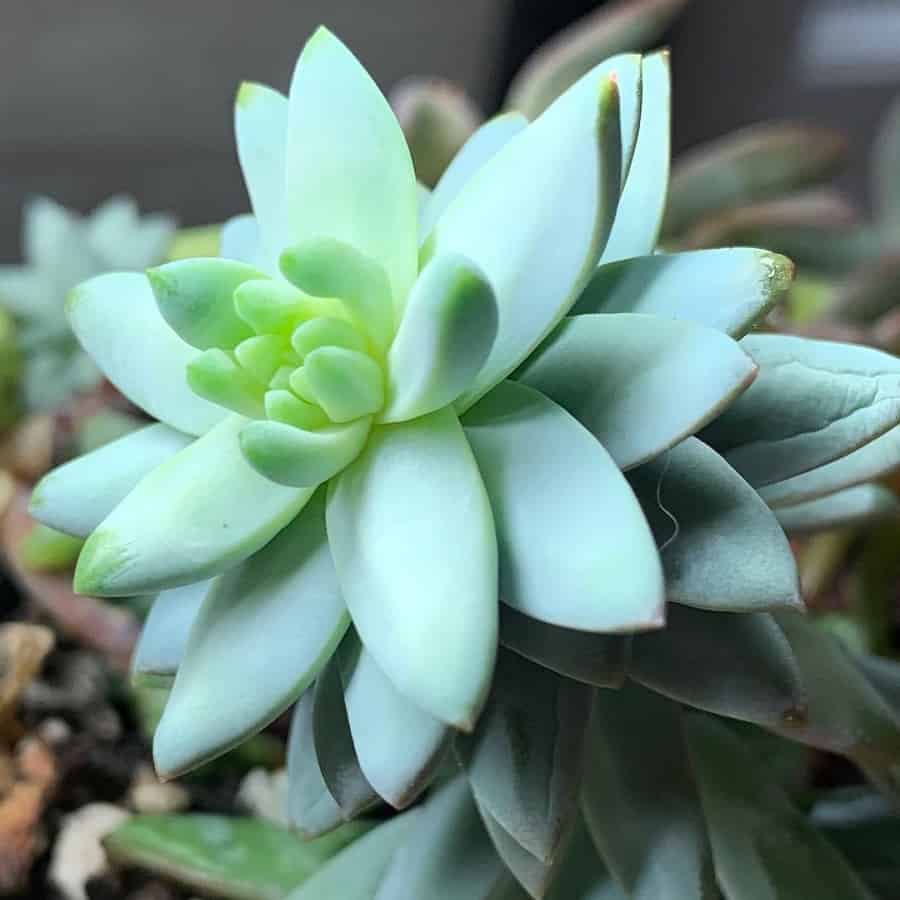
Soft blue succulent leaves with a pink flush at the tips define the Sedeveria Blue Burrito. Its foliage boasts a powdery coating of farina, and the colors intensify to deeper shades of blue and pink as the plant matures. This hybrid is a cross between Sedum morganianum ‘Burrito’ and Echeveria peacockii, known for its tall, leafy stems.
Sedeveria ‘Blue Elf’
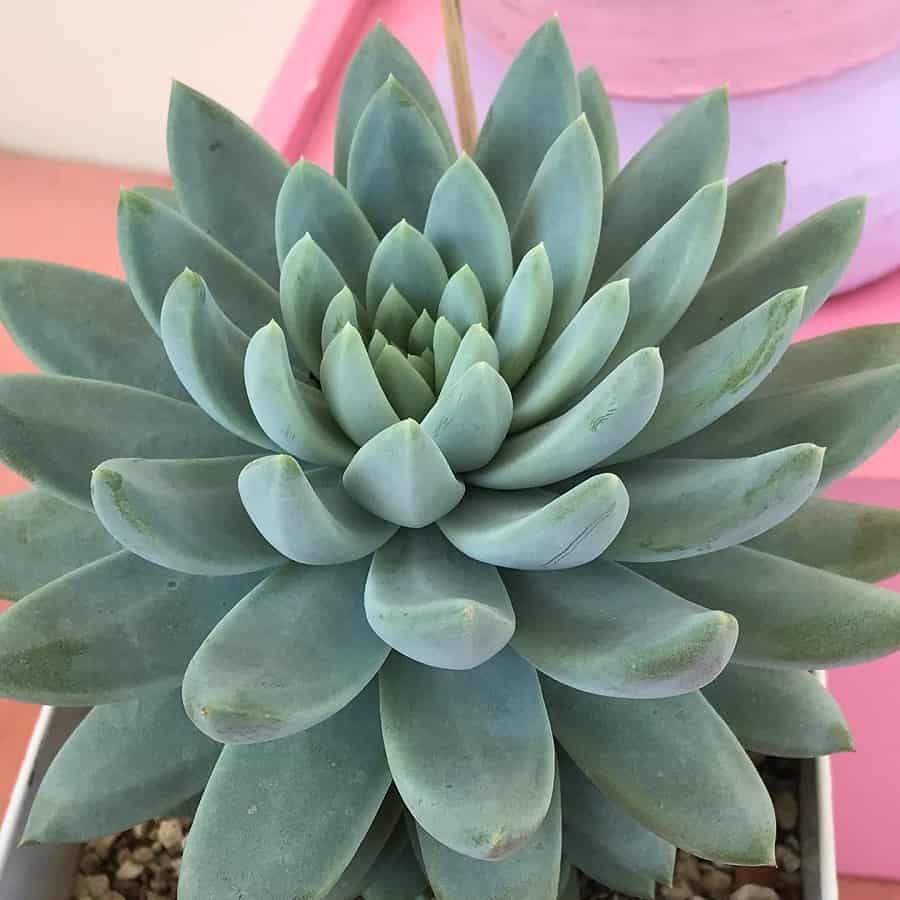
Commonly known as the ‘Happy Plant,’ the Sedeveria Blue Elf is a true delight. It forms rosettes of blue-green leaves coated in a thick, powdery farina. The leaf tips can blush from pink to burgundy, with the most vibrant hues appearing when the plant is moderately stressed by direct sunlight, water shortage, or cool temperatures. Adding to its charm, this hybrid produces cheerful bright yellow flowers multiple times a year.
Sedeveria ‘Blue Lotus’
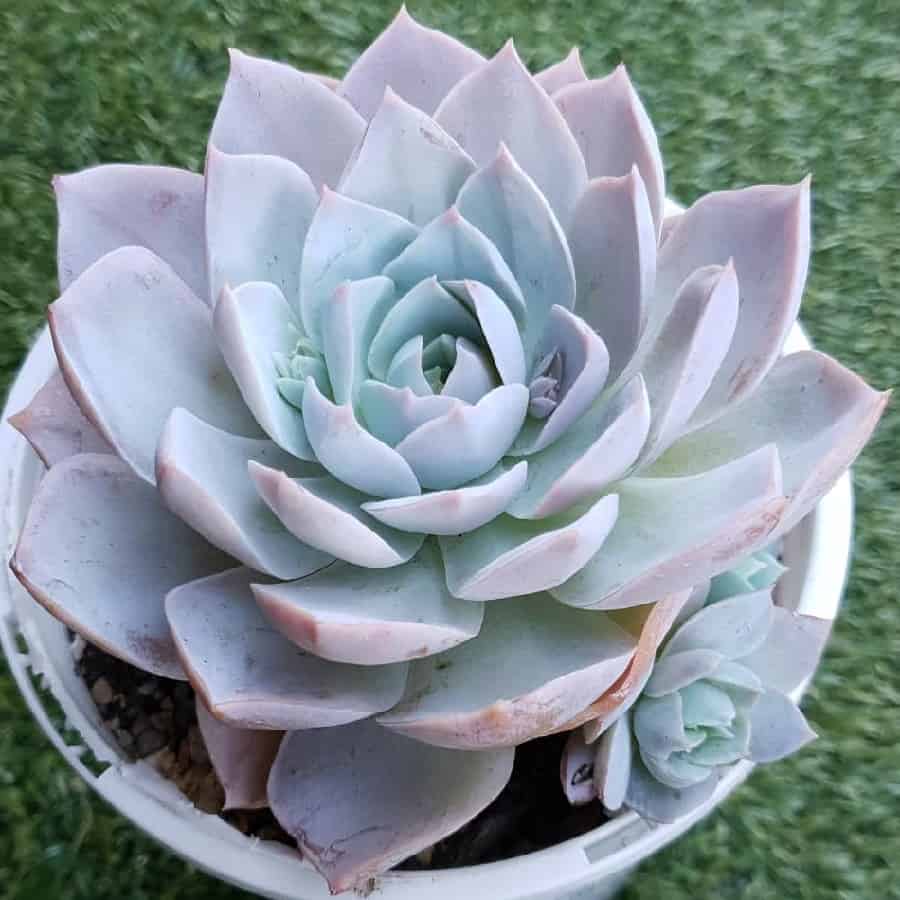
The Sedeveria Blue Lotus is a charming succulent that forms almost stemless rosettes of fleshy blue-green leaves up to 6 inches in diameter. The leaves can grow up to 3 inches long and 1 inch wide. In spring, it produces white flowers with yellow centers on erect, up to 4-inch-tall flower stalks.
Sedeveria ‘Blue Mist’
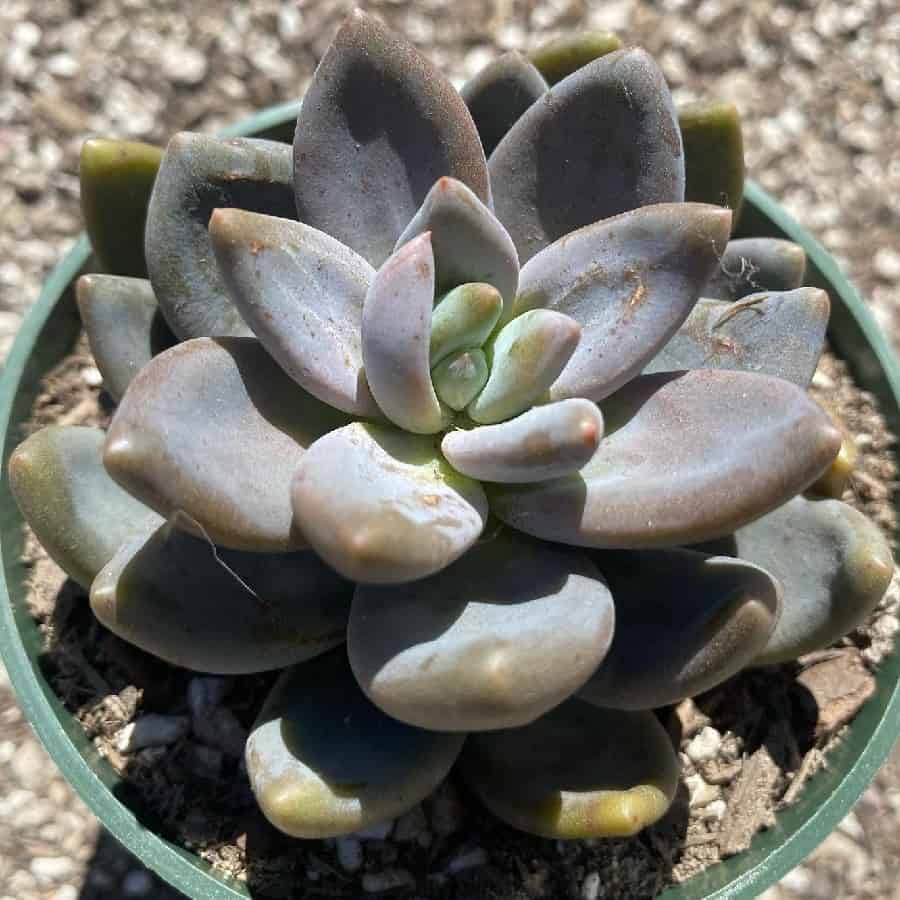
With its short-stemmed rosettes of blue or purple leaves, the Sedeveria Blue Mist is a true head-turner. The rosettes, growing up to 3 inches in diameter, deepen in color to a rich purple when exposed to intense sunlight. In summer, it produces orange-pink, bell-shaped flowers on erect, up to 6-inch-tall stalks.
Sedeveria ‘Fanfare’
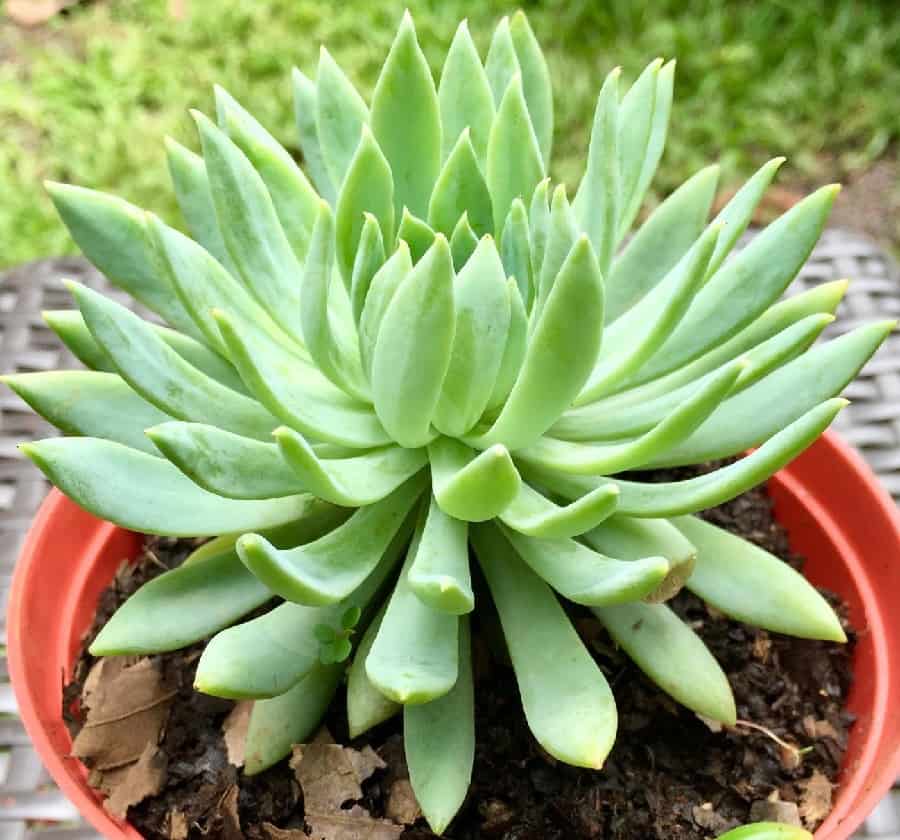
Sedeveria Fanfare is a robust grower that forms a full, stemmed rosette. Its powdery blue-green foliage is covered in a matte finish from the farina (epicuticular wax) coating. Slender, pointed leaves make up the full rosette. Each year, tall bloom stalks emerge with delicate yellow, star-shaped blossoms. While this variety can grow tall and sprawling, regular pruning keeps it compact.
Sedeveria ‘Green Rose’
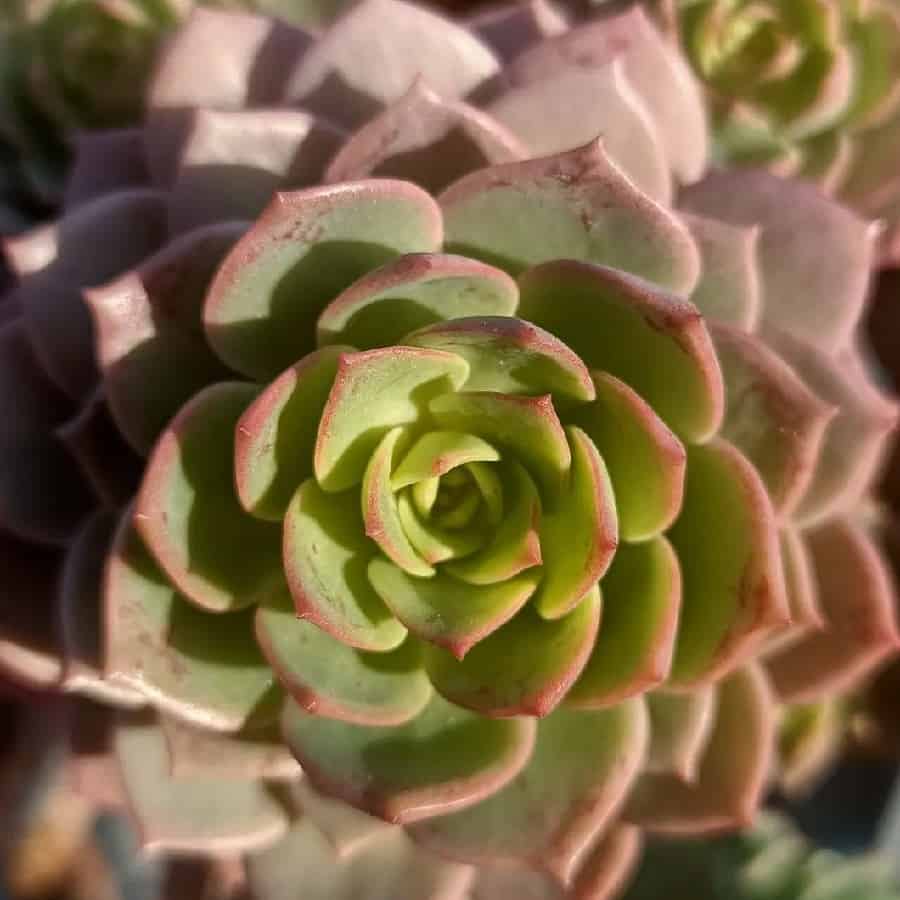
The result of a cross between Sedum palmeri and Echeveria derenbergii, Sedeveria Green Rose is a low-growing succulent. It forms perfectly symmetrical rosettes of green leaves that take on a pinkish hue when stressed. In summer, it produces yellow, star-shaped flowers.
Sedeveria ‘Harry Butterfield’
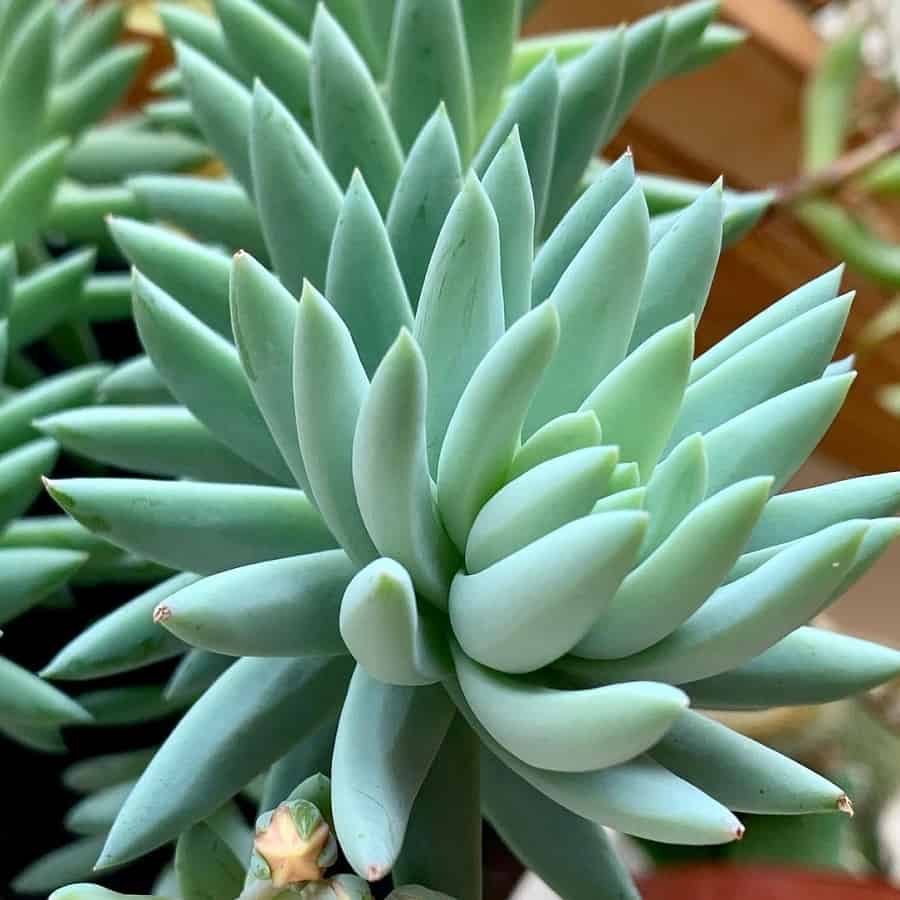
Also known as the Super Donkey Tail or Giant Burro’s Tail, Sedeveria Harry Butterfield is a phenomenal trailing succulent. It grows numerous large, pointed leaves of a minty green shade covered in a powdery farina coating. A cross between Sedum morganianum and Echeveria derenbergii, this hybrid is ideal for hanging baskets and easy to propagate from stem cuttings.
Sedeveria ‘Hummelii’
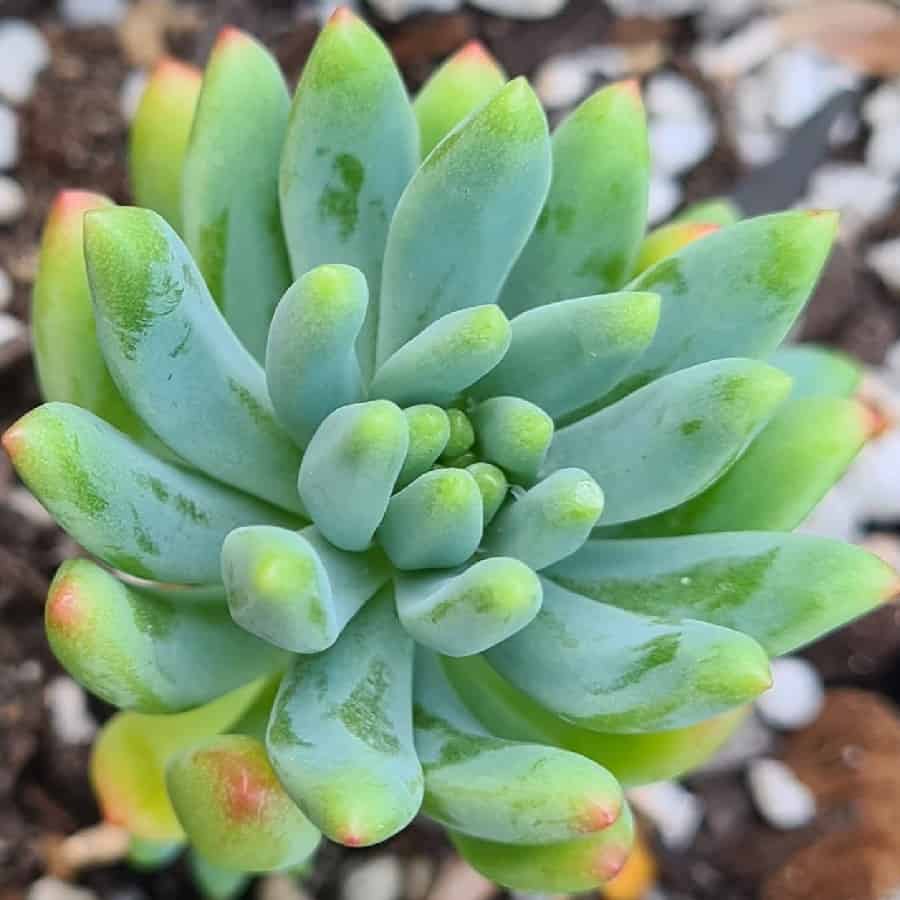
Forming rosettes of fleshy yellow-green leaves with red tips, Sedeveria Hummelii is an attractive succulent. It grows up to 4 inches tall and offsets freely to create a dense clump. Yellow, star-shaped flowers appear in summer. An intergeneric hybrid created by Ed Hummel by crossing Sedum pachyphyllum and Echeveria derenbergii.
Sedeveria ‘Jet Beads’
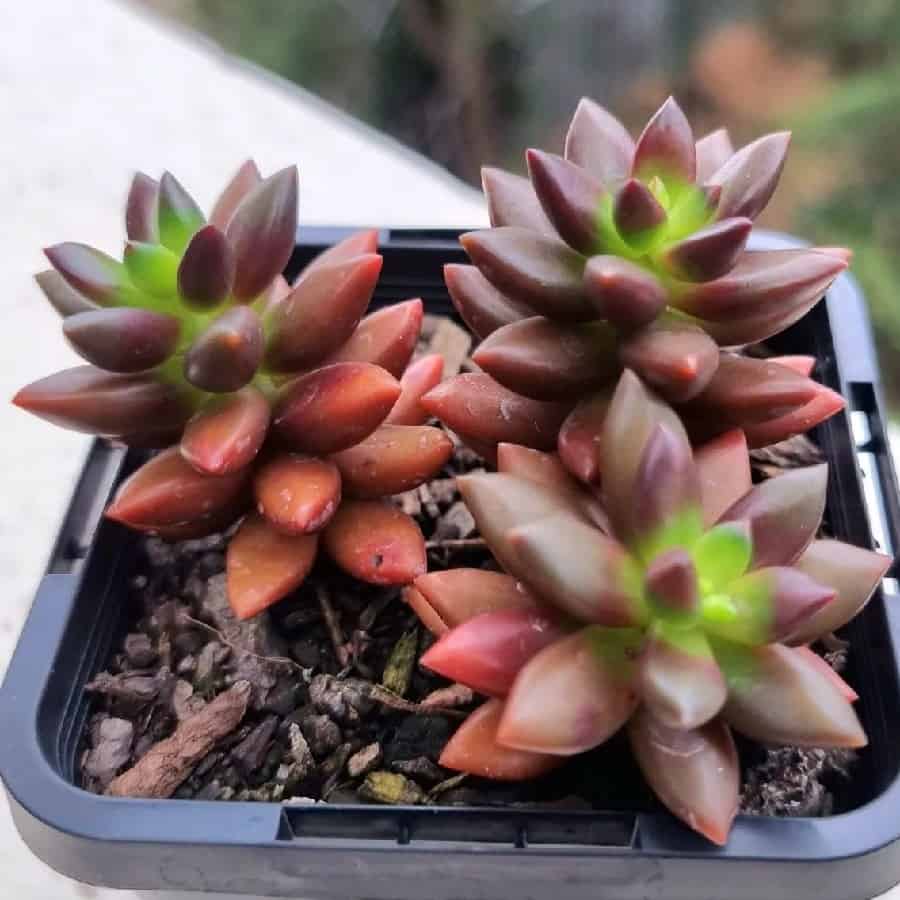
Dick Wright created this intergeneric hybrid between Sedum stahlii and Echeveria affinis. Sedeveria Jet Beads is a beautiful small succulent with pointed leaves in rich shades of dark copper, burgundy, and green. The beaded leaves are arranged along semi-upright stems, taking on a near-black tone in cooler weather. Yellow, star-shaped flowers bloom in summer.
Sedeveria ‘Letizia’
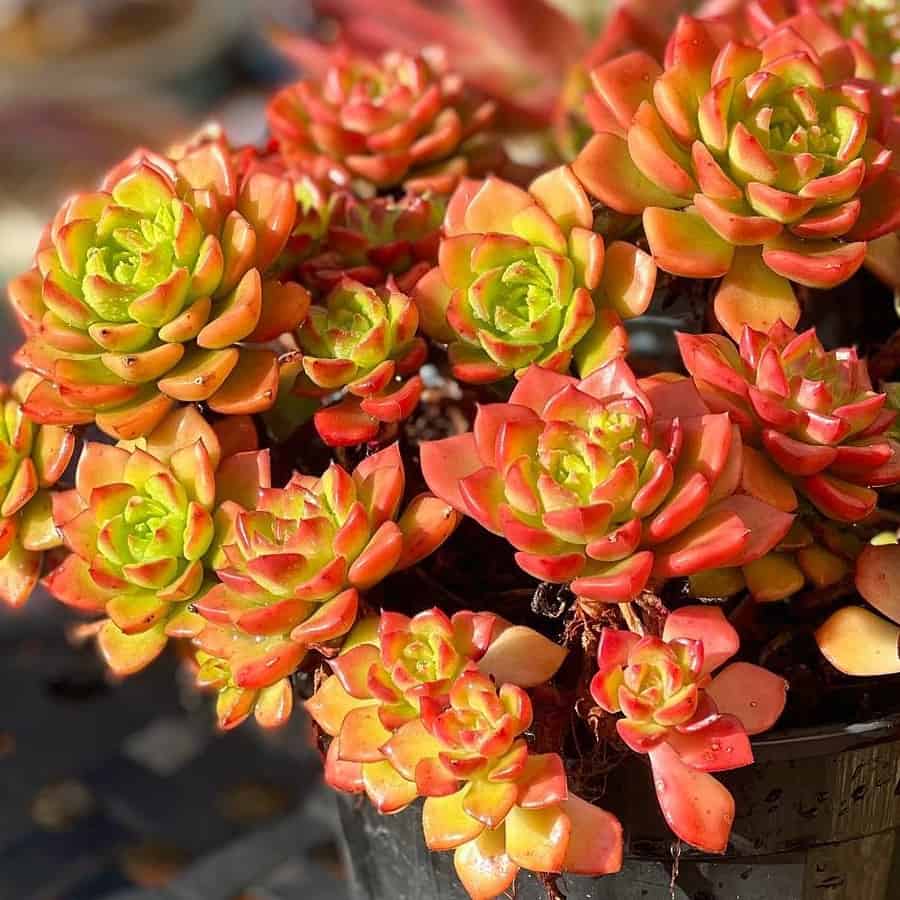
Sedeveria Letizia is a beautiful interspecific hybrid between Sedum cuspidatum and Echeveria setosa var ciliata. It produces a small, clustering, very succulent rosette about 2-3 inches across. The long, highly textured stems of ‘Letizia’ develop slowly, just like those of Sedum cuspidatum. Like many succulents, its colors change with the seasons. During winter, the leaf margins take on a bright red-purple tinge, enhanced by cool temperatures.
Sedeveria ‘Lilac Mist’
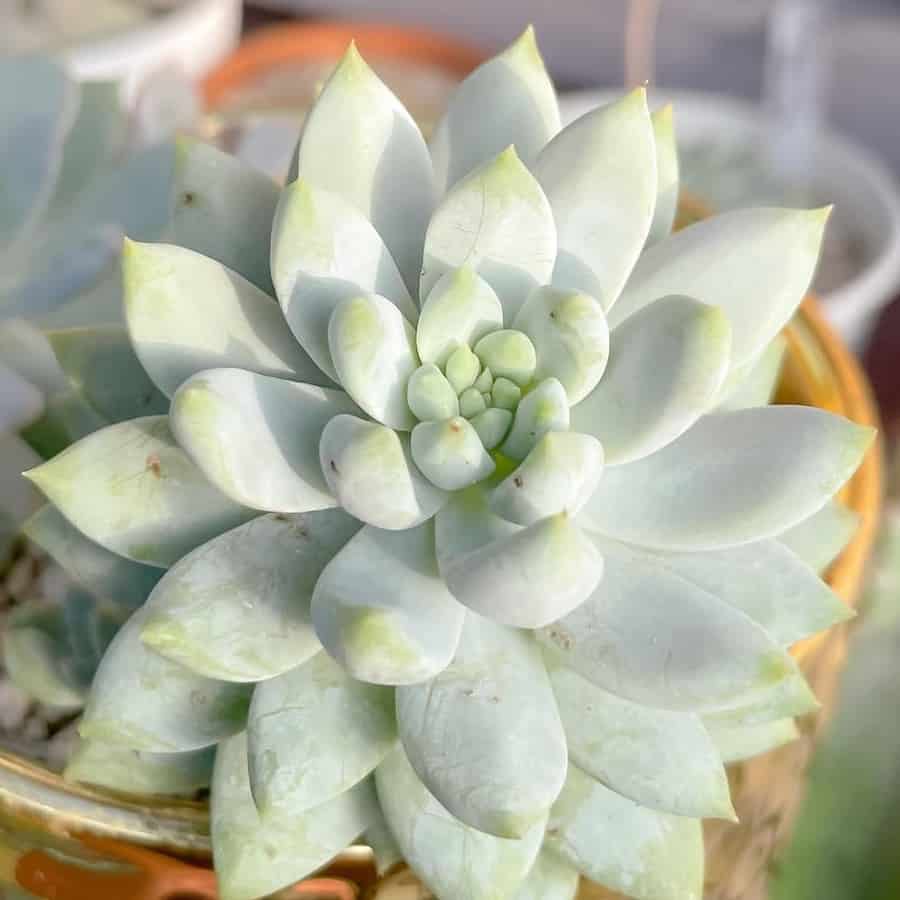
Sedeveria Lilac Mist is a gorgeous cultivar with great form and coloration. This intergeneric hybrid of unknown Sedum and Echeveria parentage gets a silvery blue look from its thick covering of powdery farina. Exposing the succulent to direct sun can bring out orange and rose highlights. It grows branching stems to about 4 inches, each fully covered by chunky, sturdy leaves.
Sedeveria ‘Rolly’
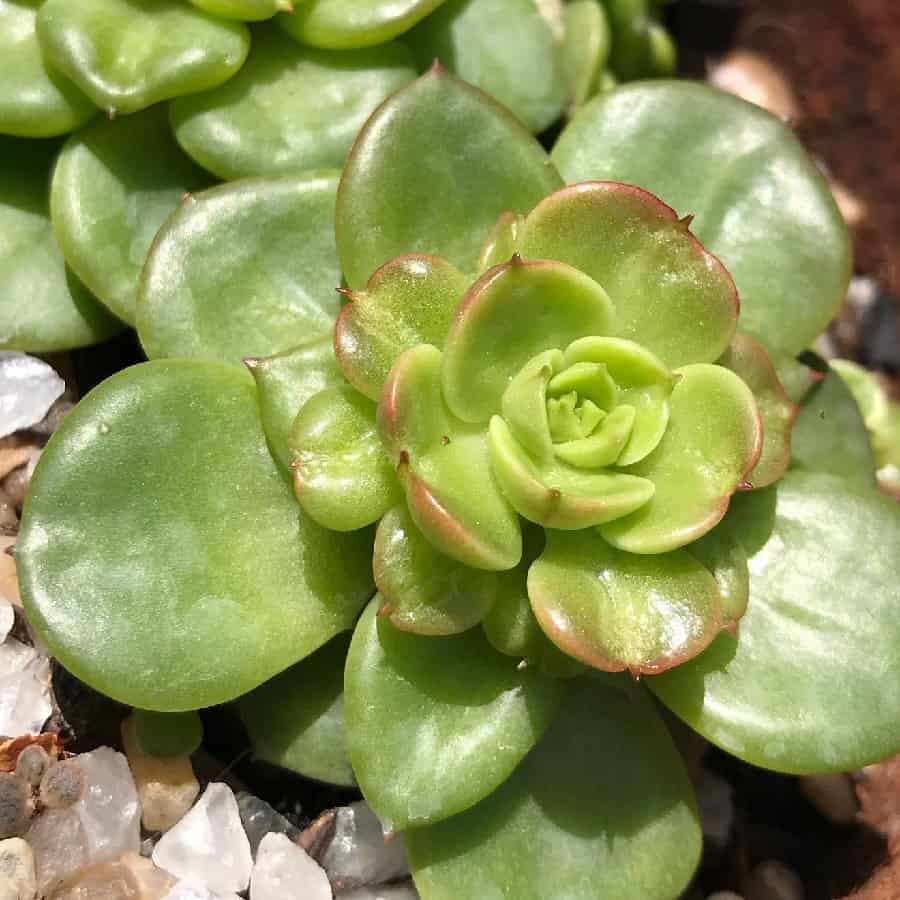
An intergeneric hybrid of unknown parentage, Sedeveria Rolly is a beautiful small succulent that forms a compact clump of short-stemmed rosettes. The fleshy, waxy leaves are bright green in summer or when grown in shade, or take on a pinkish-yellow hue in the sun with cooler winter temperatures. Unfortunately, this hybrid does not produce flowers.
Sedeveria ‘Sorrento’
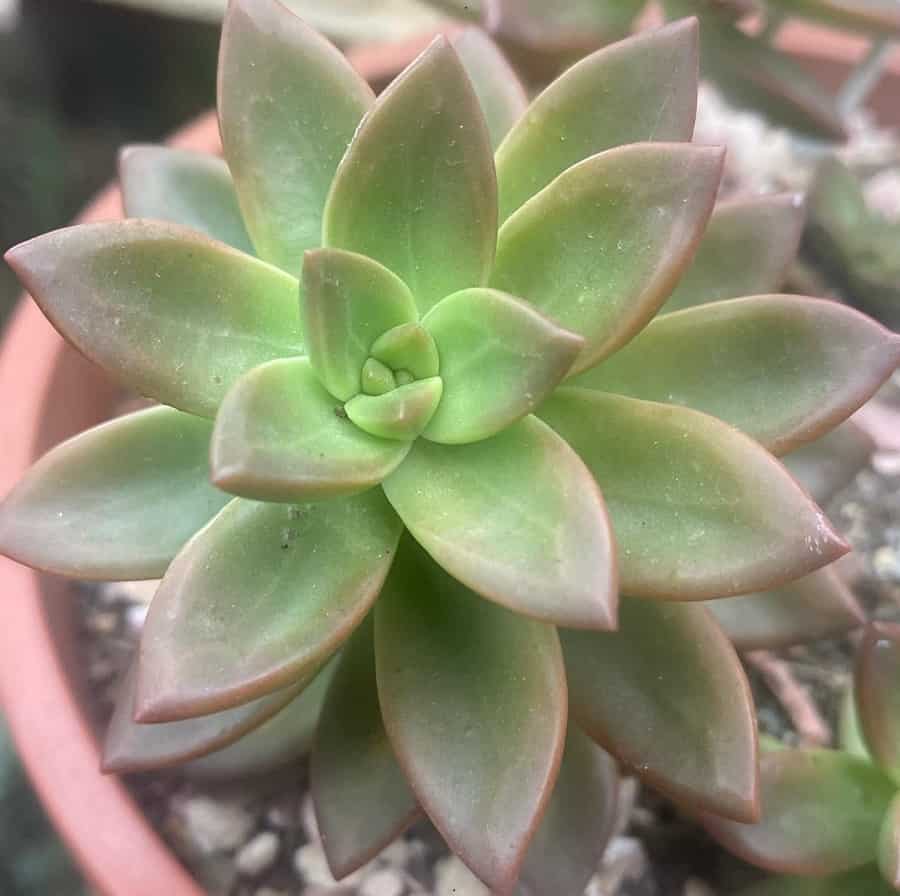
Sedeveria Sorrento is a beautiful hybrid between unknown Sedum and Echeveria species. It exhibits a stemmed rosette with bronze to coral foliage and a bright green center. Its most vibrant colors are seen when it grows in direct sunlight. The faceted leaves have distinctive, light veins, and you can expect yellow blooms each summer.
Sedeveria ‘Spring Jade’
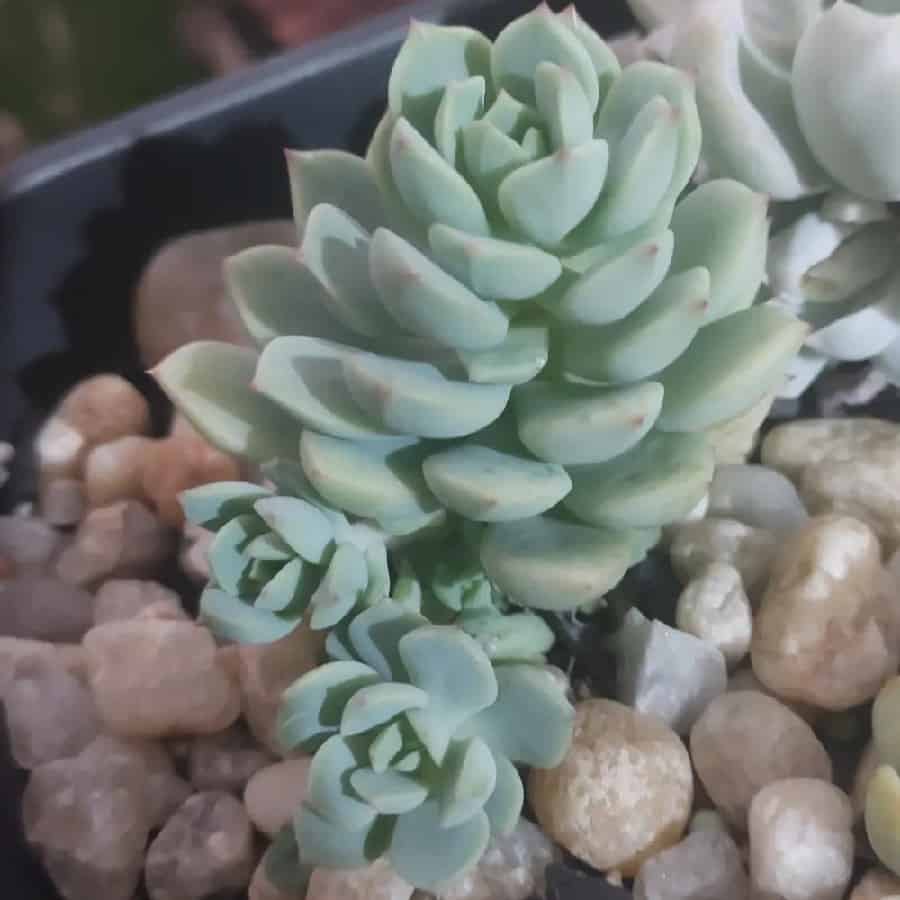
A tall, icy blue succulent plant, Sedeveria Spring Jade has many red-tipped leaves that curve upwards and are coated in a fine dusting of farina. You can look forward to a bundle of yellow flowers in spring and early summer.
How To Care For Sedeveria
Light
Sedeveria thrives in locations receiving at least 6 hours of full sun per day. While it can tolerate partial shade, it won’t flourish in deep shade. Protect it from harsh, direct sun rays that can potentially harm the leaves. Indoors, place it near a sunny window or under grow lights.
Water
These succulents are drought-tolerant but require some water. Water them weekly from spring through fall, increasing frequency during extremely hot weather or if planted in containers. Ensure the soil dries out completely between waterings, as excess moisture can lead to root rot.
Soil
Sedeveria prefers a well-draining, nutrient-poor soil mix. A great potting mixture is 60% cactus or succulent soil combined with 40% mineral components like gravel, perlite, lava rocks, and coarse sand. The porous minerals allow excess moisture to drain quickly after watering while still retaining some moisture and nutrients. This gritty, fast-draining soil prevents issues like root rot.
Temperature
Most Sedeveria varieties are cold-hardy in USDA zones 5a to 9b, tolerating temperatures from -20°F to 30°F (-28.9°C to -1.1°C). Some can even withstand temps down to -30°F (-34.4°C) in zone 4a. They also handle heat and drought well. Indoors, keep them around 60-70°F (15-20°C) in winter, as temperatures below 50°F (10°C) can trigger dormancy.
Fertilizing
Sedeveria prefers lean, nutrient-poor conditions and often doesn’t need fertilizer, especially if the soil is decent quality. If needed, use an organic fertilizer at half-strength during the growing season or top-dress with a light layer of compost. Chemical fertilizers can cause stretching and flopping in taller varieties. Avoid mulching right against the plant’s base to prevent rot.
Pruning
These low-maintenance succulents rarely need pruning. You can clean them up after winter by removing any dead or damaged growth to keep them healthy. Pinching new spring growth promotes bushier, shorter growth habits and prevents legginess. Deadheading spent flowers in fall is optional, as the dried flowerheads provide winter interest. Ground cover types can be trimmed to control their spread.
Sedeveria Propagation
In early spring, Sedeveria can be easily propagated by division. Carefully dig up the plant and separate it into wedges, ensuring each section has some new growth points. Replant the divisions and divide again every few years as needed.
They can also be propagated from stem cuttings or seeds:
Cuttings
- Take a healthy stem cutting and allow it to callus over for a few days.
- Plant in well-draining succulent/cactus mix.
- Water sparingly until roots form, then follow normal watering.
Seeds
- Sow seeds in well-draining seed-starting mix.
- Keep soil lightly moist and provide bright, indirect light.
- Once seedlings appear, gradually expose to more sun.
- Transplant seedlings into individual pots when large enough.
